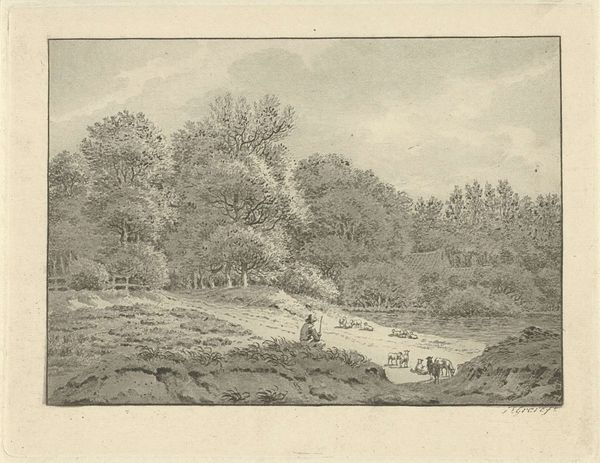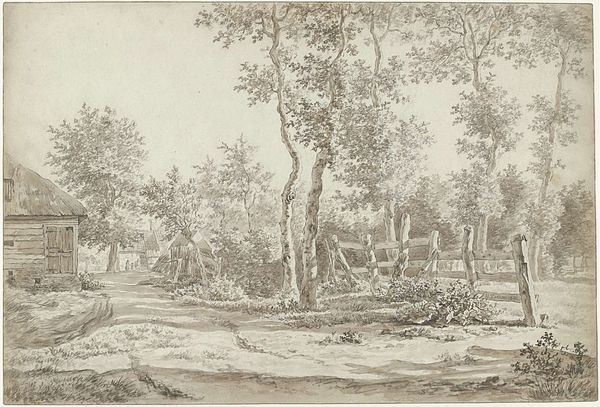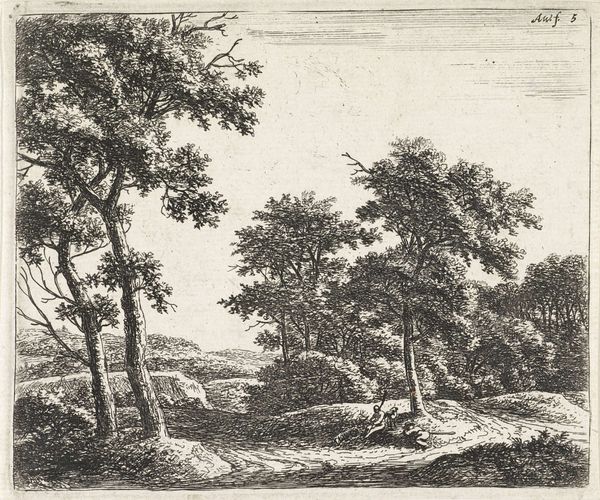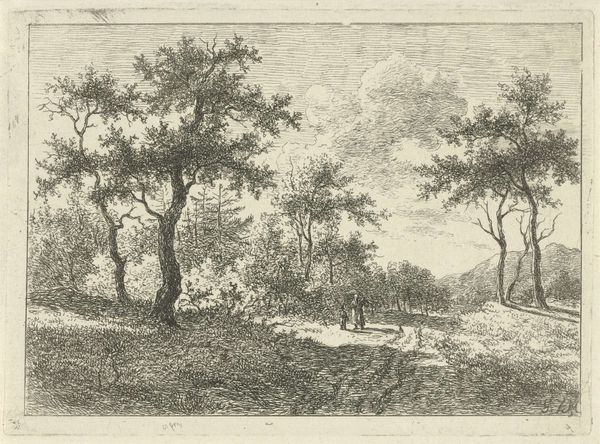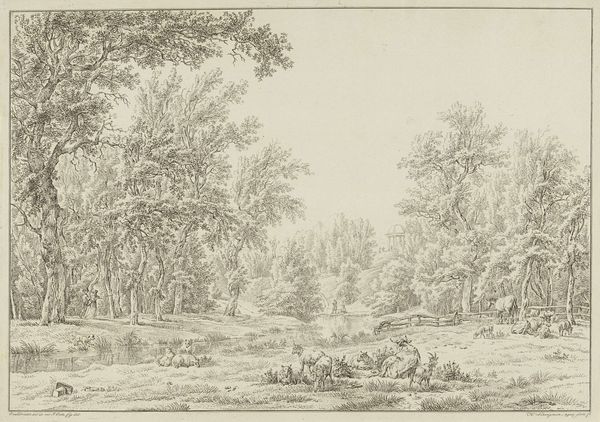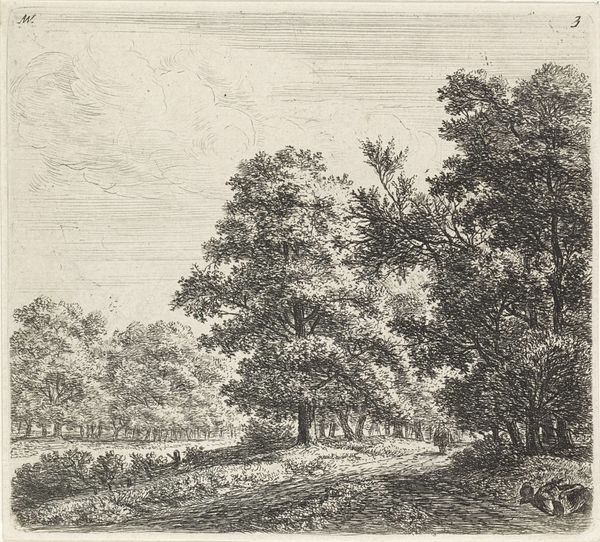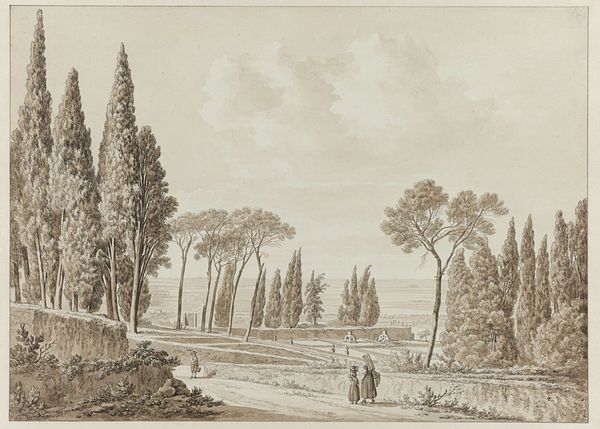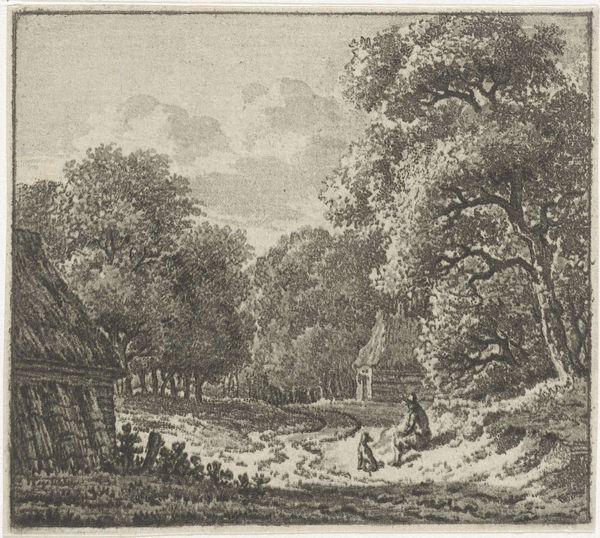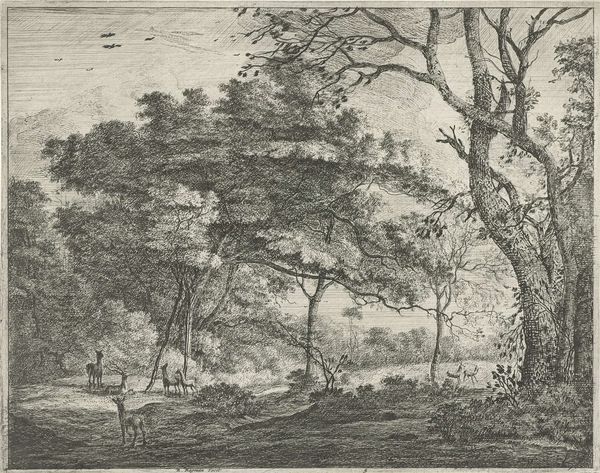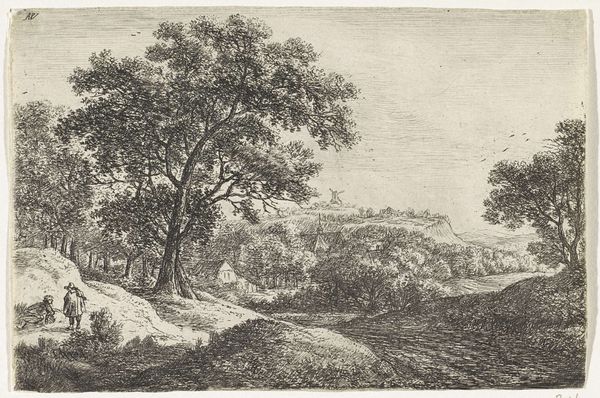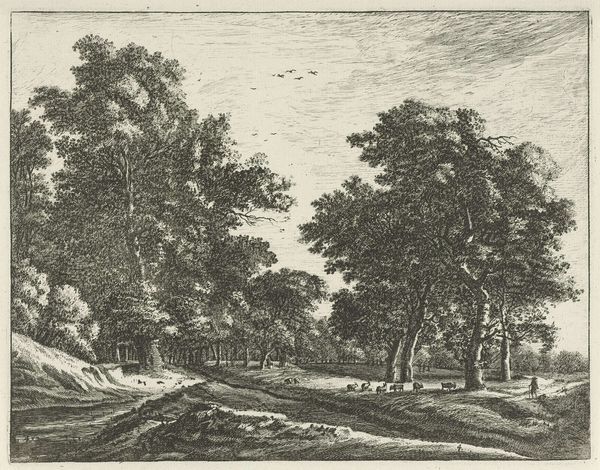
Dimensions: height 108 mm, width 150 mm
Copyright: Rijks Museum: Open Domain
Editor: This is "Landschap bij Overveen," a landscape created between 1769 and 1805 by Jan Evert Grave, currently held at the Rijksmuseum. It's an engraving, quite detailed and serene. What strikes me most is its tranquility, but I'm curious, how do you interpret this work? Curator: The peaceful scene masks the significant shifts happening during this period. Jan Evert Grave created this during a time of massive social upheaval. How do you think idealized landscapes like these served a social purpose? Editor: Perhaps it offered a form of escapism, a retreat from the rapid changes and anxieties of the late 18th century? Curator: Exactly. It evokes nostalgia for an idealized, rural past but consider who has access to that ‘past’. Notice the lone shepherd and his flock. Who is rendered visible here? And whose labour is erased in the presentation of this tranquil scene? Editor: I hadn't thought about it in that way. The engraving focuses on the shepherd, a symbol of a simpler life, while omitting the complexities of the agricultural economy and its labour force. Curator: And who has access to this idyllic scene in reality and in representation? Land ownership was, and remains, deeply tied to power and privilege, right? Grave's engraving may participate in a visual language that obscures these social divisions. Editor: That’s fascinating. So, while it appears peaceful on the surface, it reinforces societal structures through what it chooses to depict—or not depict? Curator: Precisely. The artistic choices tell a story about the society in which it was created and for whom it was created. By looking at art through a social and political lens, we understand the world in a different way. What do you take away from this discussion? Editor: I see how landscapes can be more than just pretty pictures. They reflect deeper social power structures of their time, inviting us to question whose stories are told, and whose are left out. Curator: I'm glad to hear you say that. These kinds of artistic conversations expand how we see.
Comments
No comments
Be the first to comment and join the conversation on the ultimate creative platform.
